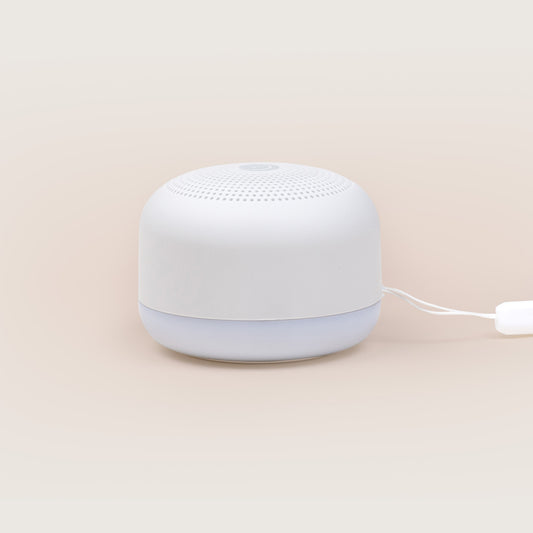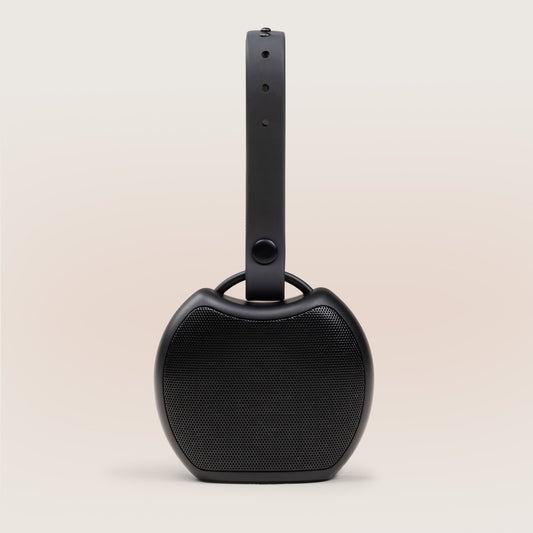Mattress Frames & Foundations — Which One is Right for You?
When buying a new mattress, you may also come across a variety of bed frames and mattress foundations. But what is a bed frame? What is a mattress foundation? What’s the difference between the two, and how do you choose from all the options nestled under those two categories? Luckily, we’re here to help. Here are some basic explanations and general guidelines to follow when it comes to looking at mattress frames and foundations.
Table of Contents:
What is a bed frame?
What is a mattress foundation?
What’s the difference between a bed frame and foundation?
Why do I need a bed frame and/or foundation?
Do I need to buy a new mattress foundation?
Types of bed frames and foundations
How do I choose the best bed frame for me?
Mattress types and recommended bed frames
Other things to consider
What is a bed frame?
A bed frame is what keeps your mattress and foundation off the ground and in one place. The term “bed frame” can describe a variety of structures built to support mattresses and box springs, but typically refers to a header, footer, legs, and side rails. More modern bed frames, however, can be more minimalistic — like platform beds, for example.
What is a mattress foundation?
A mattress foundation is a flat, sturdy surface that supports your entire mattress directly. The most popular type of mattress foundation is a box spring, but there are a variety of other foundations including solid mattress foundations, slatted foundations, and bunkie boards.
What’s the difference between a bed frame and foundation?
We know, we know, this can be confusing. The terms “bed frame” and “mattress foundation” can often refer to the same products, or more typically, products that provide both features, so it’s good to understand what each term means separately.
A bed frame’s job is to keep a mattress in place — usually, but not always, off the ground. Many bed frames integrate foundation features or are a combination of a frame and foundation, while others require a mattress foundation to be purchased separately.
A foundation’s goal is to provide a structure of universal support across your mattress to prevent it from sagging. Generally speaking, placing a mattress, especially one comprised of foam or latex, on top of a bed frame without the support of a mattress foundation is not a good idea (or won’t work at all).
Mattress foundations go on top of bed frames. It’s a symbiotic relationship that creates a sturdy, long-lasting setup for your mattress.
Why do I need a bed frame and/or foundation?
A good bed frame and foundation setup offers numerous benefits. Here’s why you should consider adding them to your mattress purchase.
Added Support
Utilizing a foundation can help prevent your mattress from sagging and becoming deformed over time. It can also help you get the full supportive benefits of your mattress, the way it was intended.
Help Your Mattress Live its Fullest Life
To a lot of people, extending the life of your bed is probably one of the most important benefits of a mattress foundation. After all, your bed setup is an investment. A sturdy foundation helps to absorb some of the weight and movement you put on your mattress, which helps your mattress stay structurally intact for longer. A good bed frame helps prevent mattress sagging and uneven wear and tear.
Extra Height
A bed frame and foundation can make it easier to get in and out of bed by adding height to your sleep setup. Typically, nightstands and bedside tables are designed with the assumption that you’re using a foundation and frame with your mattress. Adding inches to your bed height also prevents your comforter, sheets, and mattress from collecting dust, dirt, and grime. Additionally, elevating your mattress helps provide good airflow, which not only prevents the buildup of mold and mildew, but can also help you sleep cooler.
Keep Your Bed Steady
One of the main purposes of a mattress frame is to keep your bed steady when you’re getting in and out of it (or while partaking in other bed activities...) It also keeps your bed in place when you toss and turn throughout the night.
Do I need to buy a new foundation?
Generally, when purchasing a new mattress, you should also buy a new foundation. You wouldn’t build a brand-new building on top of a rotting foundation, would you? However, good-quality mattress frames can be re-used with new mattresses, as long as they they are suited for the size and construction of the new mattress. Learn how to match your bed with the right frame or foundation below.
Types of bed frames and foundations:
Box Spring [foundation]
Box springs are typically made out of wood and coils, and then wrapped in cloth to protect your mattress and better blend into the décor They are used to raise your mattress off the ground, absorb shock from movement, and provide stability and support to your sleep setup.
The only bed that requires a box spring is an innerspring mattress. These mattresses are probably what comes to mind when you think of a traditional mattress which tend to sag if they don’t have enough support underneath. Because most modern mattresses, like those made of memory foam, aren’t made with springs and coils, you don’t need to place them on a box spring.
Metal Bed Frame [frame]
Metal bed frames are commonly used to hold up a box spring off the ground and add more height to your bed. Some can be adjusted to fit different bed sizes, like going from a full size bed to a queen size bed. Metal bed frames are not designed to be used without a box spring or other foundation-type support. Many bed frames are made to fit a few sizes as your bed needs change.
Metal Platform Base [foundation + frame]
Metal platform bases are a little different than your typical aforementioned metal bed frame. They are made of similar materials, but include slats going across the frame to help support your mattress. This eliminates the need for a box spring. Most platform bases lift your mattress higher than a traditional mattress foundation, and are strong, sturdy options that can provide space for storage underneath.
Solid Foundation [foundation]
Solid foundations, like the Yogasleep Box Foundation, provide great support for your mattress. They are best suited for memory foam, latex foam, and hybrid mattresses. Similar to a box spring, a solid foundation provides a base for your mattress to sit on. However, instead of utilizing springs and coils, a solid foundation is generally a wooden box with slats going across it, wrapped in fabric. Because it is not made with springs, a solid foundation won’t sag or break down over time.
Platform Bed [foundation + frame]
Platform beds offers a low profile, compact fit. Usually, a platform bed is a combination of a mattress foundation, bed frame, and decorative headboard. This makes platform beds stylish and easy to move. Platform beds typically eliminate the need for a box spring or other additional mattress foundation, as they usually have rows of wooden slats that serve as a foundation. This construction has the added benefit of great breathing room for your mattress.
Slatted Bed Foundation [foundation]
Most slatted mattress foundations are made from a metal frame with metal or wooden planks stretched across the frame. Slatted bed foundations provide great airflow, and ample under-bed storage especially foundations that include legs that lift the bed off the ground.
Adjustable Bed Frame [foundation + frame]
Adjustable bed frames, like the M455 Adjustable Bed Base, do exactly what’s in their name: they adjust. Most even come complete with a remote control is used to control a motor that moves the angle and elevation of your bed to your desired sleeping position. These adjustments can be made to help relieve body pain, sleep apnea, acid reflux, snoring, and a number for other health issues.
Because they are basically the cream of the crop when it comes to bed frames, adjustable frames can cost a pretty penny. But if they’re able to offer you deep and restful sleep, they can be absolutely worth the investment.
Bunkie Board [foundation]
Bunkie boards look a lot like box spring foundations, but are generally comprised of a single piece of wood or metal. They are compact, low-to-the-ground foundations that can be used with an older box spring, foundation, or platform bed to provide added support. You might want to consider a bunkie board if you’re getting a new memory foam mattress but need better mattress support than your current setup can offer. It’s also a great way to provide additional support for bunk beds.
How do I choose the best bed frame or foundation for me?
Choosing a bed frame and mattress foundation can seem like a daunting task. When looking at your options, make sure you take a few things into consideration.
Choose Your Mattress First
The type of mattress you have, or want to buy, will help determine which bedframe will suit you best. Certain mattresses work best with certain types of foundations, and most mattress brands will recommend foundations for you to consider. The size of your mattress also plays a role in the amount of support you’ll need. Larger mattresses, like a queen, king, and California king, need more support in the center to prevent them from sinking.
If you don’t want to deal with a separate frame and foundation, look for a platform bed, or make sure your foundation provides as much lift from the ground as you desire.
Make sure your mattress properly fits in your frame or foundation — too big and your mattress will shift and slide around, too small and you won’t get the necessary support and could even slide your mattress out of the frame throughout the night.
Mattress types and recommended bed frames and foundations:
Memory Foam Mattress
To prevent your memory foam mattress from sinking, use a solid foundation, or a foundation with slats no more than three inches apart — the closer the better. Any wider, and your mattress will begin to sag through the cracks, reducing its lifespan. If you opt for a platform bed, you won’t need a mattress foundation, and can simply place your mattress right into the frame. A memory foam or hybrid mattress can be paired with a standard metal or wooden bed frame, but it needs to be supported by a mattress foundation.
Hybrid Mattress
A Hybrid mattress, like the Yogabed Hybrid Cool, combines a spring coil base with luxurious memory foam. The memory foam component means that you still need a more supportive mattress foundation. A platform bed, solid foundation, or slatted foundation with closely positioned boards will be your best bet.
Latex Mattress
Latex foam mattresses are similar to memory foam mattresses, and need a supportive base. Just like with memory foam consider a solid foundation, platform bed, or slatted foundation. For the slatted foundation make sure the boards are no more than three inches apart.
Innerspring Mattress
An innerspring mattress, or what you’re probably most used to in terms of mattresses, has steel coils that hold the shape of the cushioning layers above. They’re usually padded with extra foams or fibers for comfort. Because innerspring mattresses are decently sturdy, they work with almost every type of foundation. The most common combination for these mattresses includes a box spring and bed frame to lift your mattress off the ground.
Water or Air Mattress
If you prefer the rolling waves of a water bed, or the floating feeling of an air mattress, you may want to consider a bunkie board. These compact foundations will still keep you close the ground while providing an additional level of stability and comfort.
Other things to consider
Once you have settled on a mattress and decided what mattress foundation or bed frame you’d like, there are a few other things to also keep in mind.
Define Your Budget
Mattress frames and foundations can cost hundreds even thousands of dollars, with the average cost being between $200 and $500. You don’t want to skimp on your mattress foundation or frame, but there are plenty of budget-friendly options available, including metal foundations and bunkie boards. Keep in mind that the fancier foundations, like adjustable bed frames, can end up costing more than your mattress, but can be well worth the investment.
Shop for Durability and Longevity
Longevity and durability are important when it comes to a mattress frame and foundation. Make sure you pay attention to the materials used and their quality. You want to keep your mattress foundation just as long, if not longer than your mattress, so make sure you don’t pick something that might fall apart in a couple years.
Box springs are not known for their longevity, as they are prone to rupturing and tearing. Metal, solid, and slatted foundations are generally able to stand the test of time better.

Evaluate Ease of Setup and Breakdown
Determine where you’re going to purchase your bed frame and foundation and if it will come to you already assembled, or if you’ll have to put in some work. With some frames and foundations, assembly can be relatively complex, so make sure you’re up for the challenge. If you move to different locations a lot, you might want to consider something that can be easily broken down and reassembled.
Consider Aesthetic
You may end up choosing to cover your foundation or frame with a bed skirt, comforter, or other bedding accessories, which may make this consideration less relevant. However, if you want to add a statement piece to your bedroom, there are plenty of stylish bed frames and foundations available.
If you plan on using a headboard you already have, make sure you check to see that it will fit with your new bedframe.
Think About Your Space
If you have a small bedroom, consider choosing a less invasive bed frame and mattress foundation. A metal or solid foundation are both sleek options that won’t take up very much room. If you have more space to play with, you may consider a more robust frame or foundation, like an adjustable foundation or a platform bed.
Need more help figuring out what bed size will best suit your space? Check out our guide to mattress sizes.
Consider Storage Needs
As we mentioned, one of the benefits of bed frames is the elevation of your mattress. If you want to utilize the space below your bed for storage, make sure you choose a frame and foundation that gives you the height and storage room you’re looking for.
Check Your Mattress Warranty
Some mattress warranties may be voided if you don’t have the right base or foundation under your new mattress, or if you use a foundation that’s not recommended by the company. Make sure you read through your mattress policy and check to see if it only covers sagging or damage if you’re using a recommended mattress foundation.
Have we made your decision easier?
Hopefully we have helped you navigate the world of bed frames and foundations, and you’re able to decide which mattress foundation is right for you. If you’ve found this info helpful, let us know on Instagram!



















